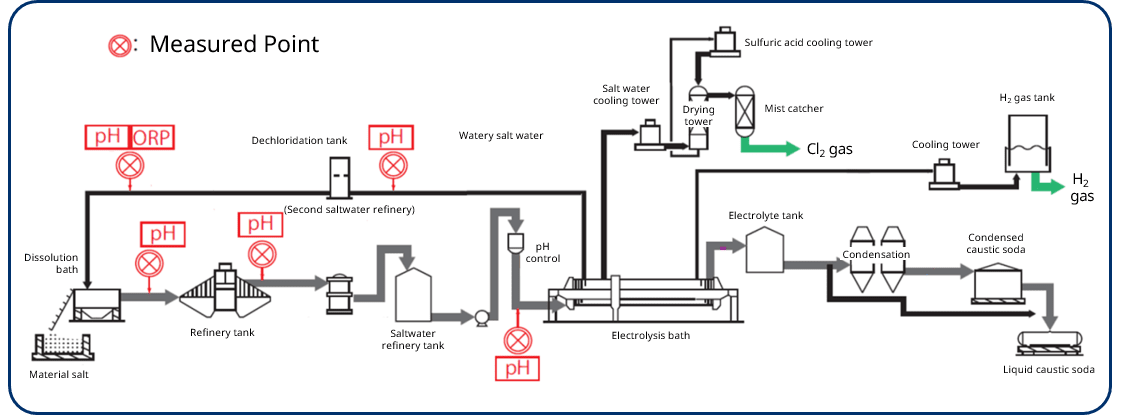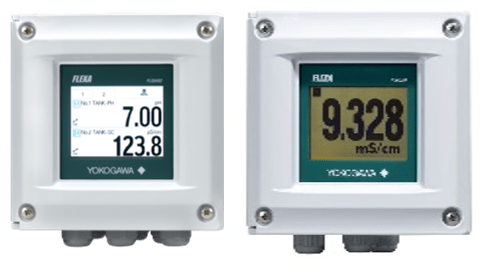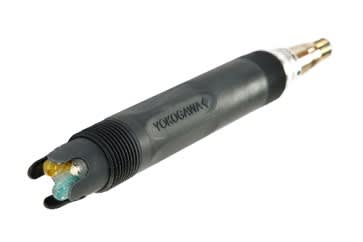SMART digital sensors and advanced data management software enhance reliability and process safety.
 The chlor-alkali industry produces chlorine (Cl2) and alkali, sodium hydroxide (caustic soda), by electrolysis of a salt solution.
The chlor-alkali industry produces chlorine (Cl2) and alkali, sodium hydroxide (caustic soda), by electrolysis of a salt solution.
The by-products are hydrogen gas, chlorine gas, and hydrochloric acid. Brine solutions are monitored/managed to improve operation efficiency, reduce energy costs, and incident prevention.
Challenges
Maintaining a precise and stable pH measurement of salt water within an electrolysis plant is difficult because of the harsh environment:
- High corrosive
- High temperature
- High contamination
Short sensor life and failure are caused by liquid junction coating, plugging, and poisoning, making maintenance and replacement cost frequent.
pH measurement in brine solutions (for example NaCl solutions as found in electrolysis processes or cheese manufacturing) are difficult. Often, inaccuracy and short sensor life are the key problems in these applications.
Specific examples of key problems include:
1. High diffusion potentials at the reference junction/potential difference
The brine ions tend to create large diffusion potentials in the reference junction. The equivalent conductance of a potassium ion (K+) and a chloride ion (Cl-) are almost the same: (75 Scm2equiv-1). That is why KCl is used normally for electrolyte solution in reference cells. The equivalent conductance of sodium ion is much less with 50 and of the hydronium ion is much higher with 200. Diffusion of these solutions (brine and muriatic acid) into the junction causes therefore large asymmetry potentials, especially if the junction is dirty or washed out.
2. High Temperatures
The temperature of chlorinated brine solutions is high, which increases the diffusion rate and therefore shortens the lifetime of the reference cells.
3. High Currents – high ground-loop currents
Chlorinated brine is measured often close to the electrolysis cells, where very high currents are present. These currents will easily cause ground loop currents in the pH sensor circuit, which again shortens the lifetime.

Solution
The problems are not related to the pH measuring cell, but almost exclusively to the reference cell. Therefore, the problem solution must be sought in alternative ways of generating a reference voltage that is stable over time and is independent of the pH value.
Product Recommendations
Process Liquid Analyzer:
2-wire 24VDC Loop powered FLXA202 Analyzer
4-wire AC/DC powered FLXA402 Analyzer

Sensor Selection:
Analog and digital SMART sensors are available. Analog options allow users to interface with a system that has been used historically. SENCOM™ technology enables sensors to transmit and receive data when connected to a transmitter/analyzer or any PC. The SMART digital sensors maintain specific measurement and calibration data on an integrated chip along that is an integral part of the sensor, providing easy plug and play solutions. The data management software optimizes the performance of sensors for enhanced reliability and process safety.

FU20-MTS Cation Differential pH/ORP Sensor:
The cation differential pH and ORP sensors were designed for difficult applications where conventional sensors are ineffective. These include measurements such as brine solutions to applications as diverse as electrolysis processes and cheese manufacturing.
 Digital SMART Option:
Digital SMART Option:
The re-useable smart adapter, SA11, offers full measuring parameter functionality of analog sensors equipped with a Variopin connector and Yokogawa ID chip. The SA11 automatically recognizes the installed sensor and prepares the right configuration.
Key Advantage
One sensor can measure pH and ORP simultaneously.
- No junction
- No open connection from the process to the inside of the sensor
- No possibility of poisoning the reference element
- No use of diaphragm hence no issues of plugging or coating of junction diaphragm
- No outflow of electrolyte so no depletion issues
- High temperature and pressure measurement available (105℃, 0.5Mpa)
- pH and ORP simultaneous measurement available
Industries
-
Chemical
Chemical plants rely on continuous and batch production processes, each posing different requirements for a control system. A continuous process calls for a robust and stable control system that will not fail and cause the shutdown of a production line, whereas the emphasis with a batch process is on having a control system that allows great flexibility in making adjustments to formulas, procedures, and the like. Both kinds of systems need to be managed in available quality history of product, and to be able to execute non-routine operations. With its extensive product portfolio, experienced systems engineers, and global sales and service network, Yokogawa has a solution for every plant process.
Related Products & Solutions
-
2-Wire Transmitter/Analyzer FLXA21
The FLEXA™ series analyzers are used for continuous on-line measurements in industrial installations. With an option for single or dual sensor measurement, they are the most flexible two-wire analyzer available.
-
Digital SMART SENCOM™ Adapter, SA11
Reusable SMART adapter, requiring only the analog sensor to be disposed of when it reaches the end of its lifetime. With the SENCOM 4.0 platform, Yokogawa delivers reduced costs and waste while contributing to its long-term business goals of a sustainable future for all.
-
Multi Channel 4-Wire Analyzer FLXA402
The FLEXA™ series analyzers are modular-designed analyzers used for continuous online measurements in industrial installations. They offer single or multi-sensor measurement.
-
Conductivity Analyzers
- Conductivity analyzers, meters, transmitters
- Continuous process measurement and monitoring
- Conductivity, resistivity, WIFI, demineralizer water, RO water, percent concentration, boiler blowdown, TDS
-
Liquid Analyzers
- Liquid analyzers
- Monitoring process chemistry
- Water quality
- Process optimization and control
Have Questions?
Contact a Yokogawa Expert to learn how we can help you solve your challenges.